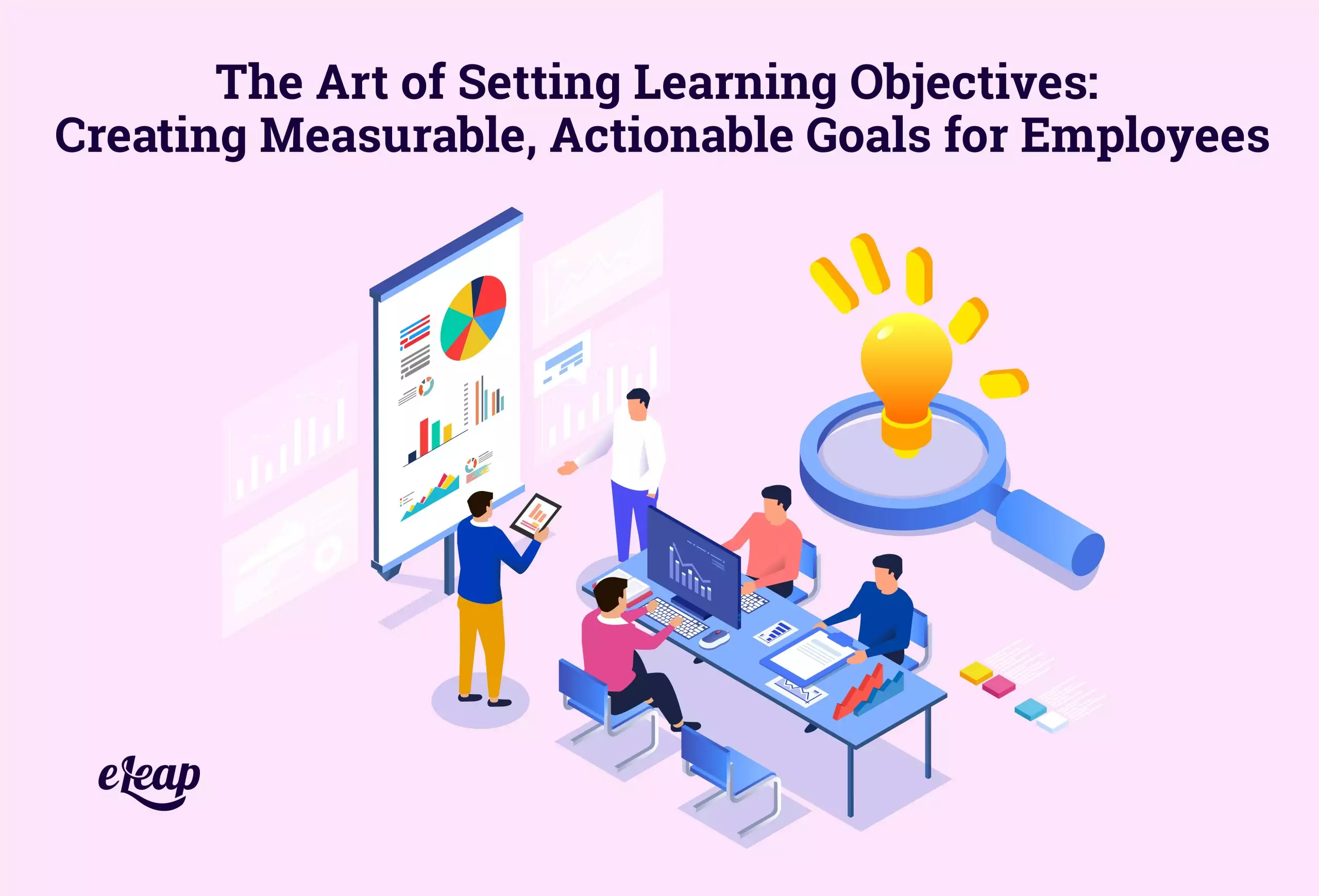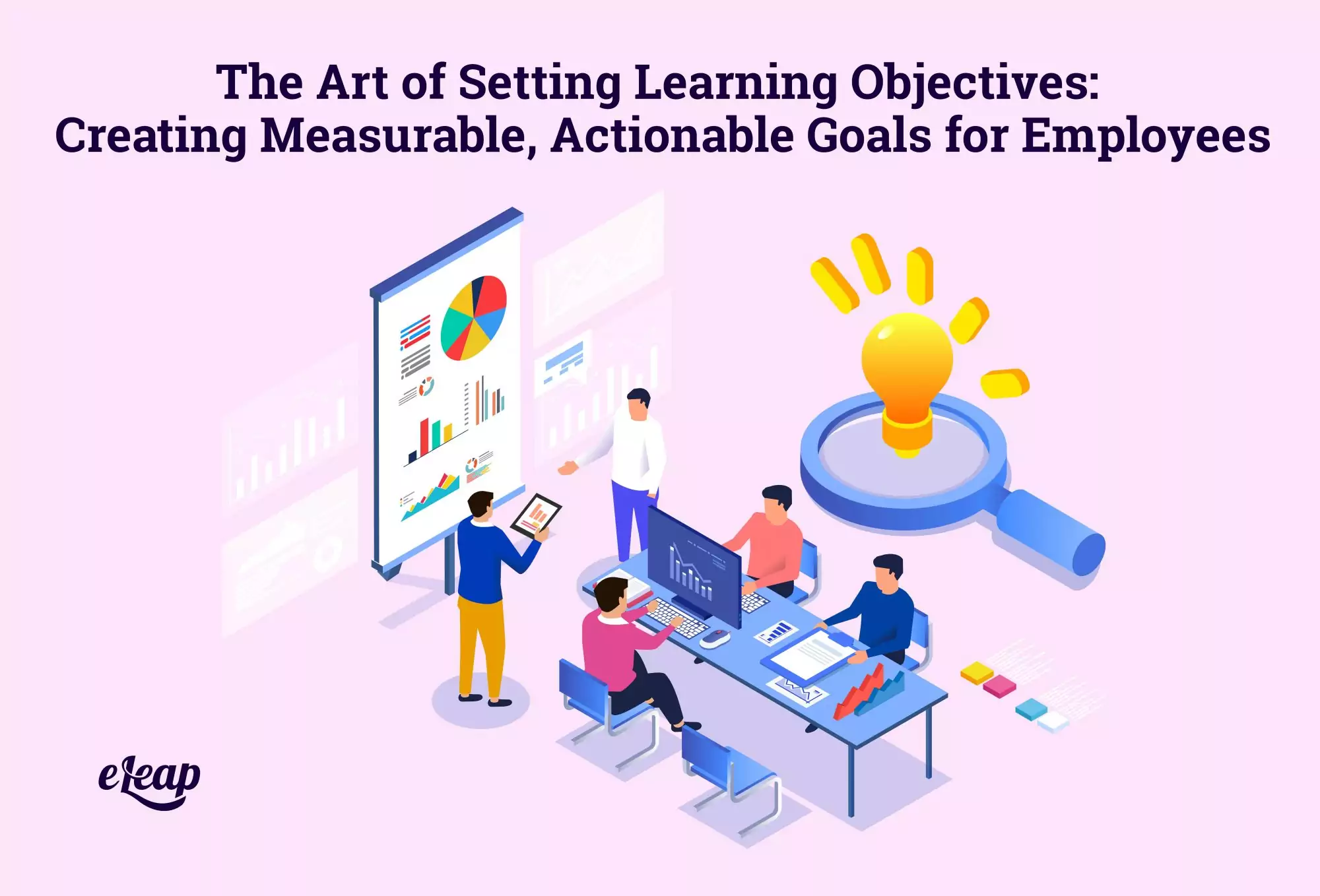The Art of Setting Learning Objectives: Creating Measurable, Actionable Goals for Employees

Learning and development without objectives is fruitless. Objectives give meaning and context to the learner’s journey. They help organizations define the value of and ROI needed for L&D initiatives.
However, setting learning objectives can be challenging. It requires understanding not just of the employee’s current role, but their existing knowledge, what they need to know, and even where they want their career to go in the future. Administrators also need to understand the business’s goals and objectives, and how a learner’s efforts tie into those.
In this article, we will discuss the art of setting learning objectives. While it can be challenging, it is not impossible. A little guidance is often all that is needed.

It Begins with the Employee
First and foremost, learning objectives need to relate to the employee, not the trainer or the learning management system. In many cases, they should only relate to the business itself as a secondary consideration. What does this mean? Consider the following:
- Learner Focused: Why should your objectives be learner-focused? Simply put, they are the ones going through training. They are at the heart of the equation. Failing to make your objectives learner-focused will result in failed objectives.
- Skill Focused: Why are learners taking the course in the first place? To learn something new and to be able to do something specific after they complete the course. It follows that your objectives need to relate to the skills learners master during the training.
- Result Focused: Training is designed to help learners master ways to achieve a goal or produce a result. Therefore, your objectives must take this into account. What will be done? What will employees learn to do?
Writing Out Objectives
All training should be based on specific objectives. Defining those will require actually writing them out, which can be difficult. You can avoid that problem by ensuring that each objective includes the following three components:
- It defines clear, meaningful actions for the learner.
- All actions relate to some observable behavior.
- Objectives include criteria against which you balance learner performance.
Here’s an example of an objective write-up that includes those three elements:
“At the end of this module, learners should be able to X, XX, XXX”.
In the example above, the X’s represent the previously mentioned performance-related criteria. In other words, an assessment would use those indicators to determine whether the employee had absorbed the knowledge presented in the course or not (or whether the course was appropriately presenting the right information). Let’s use another example:
“At the end of this module, learners should be able to accurately identify customer needs, provide the required information, and escalate the situation if necessary”.
Based on that statement, it is clear what learners should be able to do when the module is completed. This provides value to both learners and administrators assessing progress and module effectiveness. If learners are unable to achieve those outcomes, administrators must dig deeper to determine where the problem lies.
Relevant to Business Goals
All learning and development should ultimately tie back to the organization in some way, even if that is just through improved employee retention and better engagement. However, when setting learning objectives, those goals must be kept in mind and clearly tied to the content (even if it is only clear to administrators). To do this, you will need to think about where the business needs to be in the future and how the training will help you achieve that goal.
Next, assess team knowledge and skills, determine where any gaps exist that might prevent the organization from reaching its goals, and determine what training needs to be provided to get there. After setting your objectives, take another look at the company goals and ensure that goals and training objectives are still relevant and consistent.
Without a clear connection to business goals, learning objectives can lose their meaning and value over time. While there is nothing wrong with providing training for the sake of development alone, it is always a wise decision to tie development to improved business outcomes, if for no other reason than to augment ROI.
Short, Simple, Specific, and Actionable
There is a temptation to get very descriptive when setting learning objectives. Avoid that temptation. Keep objectives short, simple, and actionable. Remember that these are all about providing guidance and helping learners and administrators understand the purpose of training and what should be gained. Clarity is critical for that understanding.
In some cases, this may require that you break complex learning down into multiple modules. For instance, rather than having a single, very large module on customer service, you might decide to break it down into segments by topic or skill, such as communication, empathy, listening, and escalation. Each of those smaller modules would support short, simple, specific, actionable objectives that not only make it easier for learners to understand what’s expected of them but also benefit administration when it comes to assessing the effectiveness of your learning initiatives.
Create a Sense of Action
Your learning objectives must convey meaning, but they must do so in a way that is easy to understand. Generic verbs dilute your meaning. For instance, “employees will understand warehouse safety policies” feels like it conveys the right meaning, but it is not entirely clear.
A better example would be “employees will be able to apply warehouse safety policies”. This communicates the ultimate goal of the training (applying the knowledge, not just understanding it). By creating a sense of action with the right verbs, your learning objectives (the desired outcome) become clear.
Support It All with the Right LMS
The right learning objectives will support your learners, accelerate your L&D program, and drive better results. However, make sure you have the right supports in place, such as a modern, cloud-based learning management system (LMS). At eLeap, we understand just how crucial technology is to today’s learners, but also to achieving meaningful, relevant outcomes for your learning and development efforts. Contact us to learn more about our LMS. (download free LMS Skeptic’s Guide eBook)